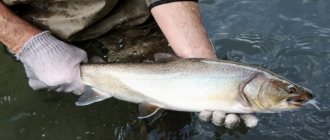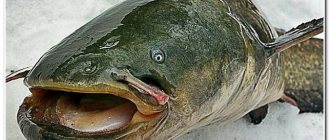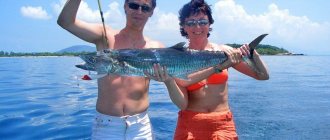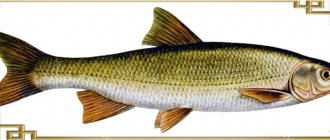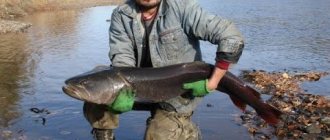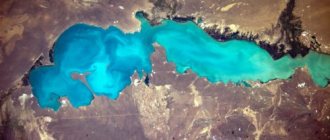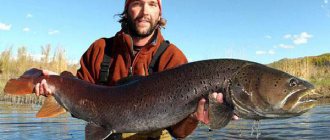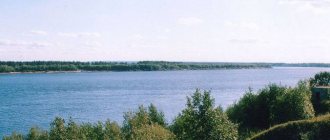Fishing Features
Ichthyologists count a considerable number of varieties of char, but all of them can be safely described as not only beautiful representatives of the underwater world, but also as quite large and strong fish.
By nature, the loach is a predator. Of course, there are some populations that feed on all kinds of larvae, crustaceans, etc., but its main food both in the sea and in the river is fish. This explains the predominant use of spoons for catching char, which they swallow with incredible greed.
In certain cases, you can do without a spinning rod and use a regular float rod to hunt this predator. In this case, a small piece of fish fillet is used as bait.
As a rule, char lives at the very bottom, regardless of the type of reservoir.
By the way, the predator is capable of moving very quickly . However, oddly enough, he spends most of his time motionless, in shelters made of stones, snags or algae thickets. In some cases, the char goes into the sand, hides in cracks, looks for secluded places near a high bank, and can also dig a cozy hole for itself under stones.
During the hot period of the year, the predator lives in small bodies of water near rapids and at shallow depths. Almost never in the summer does this fish gather in schools. But during the winter season, staying in large groups for char is a common occurrence. Lake species stick to the depths; for wintering they choose holes and pools, which they leave only with the arrival of spring, when the ice is just beginning to melt.
One of the features of this fish is its incredible vitality. The predator is able to survive in water areas where water freezes almost to the very bottom, and does not die when swampy streams dry out.
From spring to late autumn, char is caught mainly with a spoon, fly, or worm. Biting activity is observed during sunrise and sunset. During these periods, the predator rises to hunt midges falling into the water. In winter, it should be looked for in the depths of the reservoir, at the very bottom, where it descends in search of larvae.
General information about char
The Whiskered Char can be seen throughout Europe and Russia in reservoirs, lakes, seas and rivers. Their meat tastes good and has a lot of vitamins.
- The color of the loach changes depending on where it is located and what natural conditions affect it. It can be solid green or light.
- Char is extremely sensitive to changing weather conditions.
- Loaches thrive in ponds with poor water. They most often live at the bottom, as this is where the largest amount of food is found.
- In case of danger, loaches hide in sand, stones, thickets, and cracks in the underwater terrain. This is where they spend the winter.
Char fishing is always interesting and exciting, but in order for the catch to be significant, you need to properly prepare for the activity.
Search for a predator
When starting a search for char, the first thing you need to do is inspect the area of the reservoir where there is a relatively flat bottom covered with stones. When studying the water area, do not forget that char does not tolerate bright light. So on a sunny day it can only be found at a depth of at least 6-7 m. In this case, the use of fly fishing gear will not bring any results.
Cloudy weather, on the contrary, can contribute to a good catch , since the fish are in shallow rocky areas. There, char hunts for juvenile grayling and whitefish.
To more accurately determine the location of the predator, you just need to carefully observe the water surface.
The fish makes its presence known by various splashes and movements, collecting insects from the surface and chasing the fry.
In addition, you can detect char with maximum accuracy in spawning streams. Of course, fishing during the spawning season is prohibited, but after this period a certain part of the predators descends the stream and remains to live near its mouth. That is why such places are more popular among fishermen.
The flies used
I usually describe fly fishing gear starting with the rod or even the equipment needed to fish. Now I’ll try to do everything the other way around and start the description with the “flies” used. It cannot be said that the red-bellied robber is very picky about the selection of bait.
However, the “flies” must be presented in those layers of water where it feeds, and the second important factor will be their size and silhouette. On the surface you need to use dry “flies” that correspond to the size of the flying insects.
When fishing in sunny weather at shallow depths, you can use small wet flies and streamers with shiny elements. When fishing in cloudy weather at great depths, preference is given to heavy, voluminous “flies” of dark colors.
In any case, working “flies” will need to be selected empirically, always starting with those that have already worked once in similar conditions.
Char fishing
On a float rod
The most favorable time for fishing for this predator using a float rod is considered to be June and July. During this period, its mass entry into the water area is observed.
Considering that most of the fish live in the reservoir all year round, therefore, this gear can also be used all year round , with the exception of freeze-up time.
It is best to use large boiled salmon caviar as bait. By the way, the larger the size of the eggs, the more effective the fishing .
You can additionally tint the caviar, and also use artificial bait - circles and eggs with a diameter of 6-8 mm. Raw caviar works well, even spoiled caviar.
There is another unique technique: you need to take several eggs, place them in an old nylon stocking and wrap them in the form of balls. The ball size should be about 10 mm, and the twisted area should be tied with regular thread. The finished bait should be dried a little on a piece of paper.
The optimal fishing rod size is at least 3 m. Main components:
- reel with fishing line 0.3-0.4 mm;
- float;
- a corresponding sinker fixed on the main fishing line;
- leash with a hook, which is tied at a distance of the width of the palm from the sinker.
The leash size is about 30 cm. To reduce the likelihood of breakage when hooking or fishing, it is advisable to use a stronger fishing line. Single high-quality hooks are also suitable here, but it would be good to use treble hooks to ensure effective hooking.
The balance of the selected tackle plays an important role , otherwise you may miss the bite. It should be remembered: the loach takes the bait immediately, which instantly causes the float to sink down. For this reason, instant hooking is necessary so that the fish does not escape.
For spinning
Here you can use the same techniques and methods as for hunting other salmon.
It is recommended to choose a high-quality, durable and lightweight fishing rod equipped with a reel with either a braided cord (no more than 0.12 mm) or a regular fishing line (diameter 0.3 mm). In this case, oscillating and rotating spoons performed well. By the way, char often hunts close to the shore , so there is no need to cast gear over long distances.
Of course, you can’t do this without some experience and skill, since the places needed for fishing are at shallow depths. This means that the lure will also have to be played at shallow depths .
Since char is a strong competitor in every sense, it doesn’t hurt to have a landing net with you for reliability .
Fly fishing
Fly fishing is best in the warm season. This method is rightfully considered one of the most effective.
- It is more advisable to use long rods that allow you to make a successful cast.
- You need to move the fly as close to the surface of the water as possible. Although the char is at the very bottom, its predator instinct kicks in, after which the bite occurs.
- Of particular interest is fishing with a Bolognese fishing rod , where it is necessary to place the bait along the very flow of the river near the surface of the ground.
If a predator is somewhere nearby, then it will definitely react to the bait with an instant and greedy bite.
⚓ Fishing gear
When choosing a fishing rod, at least pay attention to a model of medium length, but not to the detriment of its sensitivity and strength. Why? The fact is that char is often found in coastal vegetation. It’s better to have two tackles in your arsenal: a long one and a shorter one.
In terms of preventing snags, it is useful to install a leash on the main fishing line. The recommended thickness of the fishing line is 0.2 mm, the leash is 0.1 mm. Fishing will be more effective if you include a light and sensitive float in your fishing rod rig. In our case, we need ordinary float tackle without any frills.
As for hooks , both round and semi-round options are suitable for char. In the first case, short, medium and long forends, bent or straight points are acceptable. In such hooks, rings, spatulas or ribbed heads are provided for tying them to the fishing line. When using a metal leash, you need to place your bet on a hook with a ring.
The second group of hooks includes products with a slightly flattened transition connecting the forearm and the top of the bow. More often on the shelves there are products with a bent tip, less often - flat ones, without a bent tip.
If you decide to make a float , then choose hard foam or cork as the material. What are the main advantages of homemade floats. Firstly, they are easy to move along the line. Secondly, a float made from the above materials is quickly attached and removed and responds to the most careful bite. There were some drawbacks: poor performance in currents, frequent breakdowns.
The average length of the part of the float protruding above its body is 3 cm, the lower part is 5 cm. The materials of the antenna and keel of one float are different. For reservoirs with a current, floats with a long keel are most suitable, for reservoirs with standing water - with a short one. Also in the second case, a float with a wide surface part is preferable.
The sinker is a simple olive, the weight of which is selected so that the nozzle is as close to the bottom as possible.
Catching char in winter with a spoon
Fishing with a lure can bring quite impressive results, in particular, you will be pleased with a relatively large trophy.
- Diving spoons and all kinds of oscillating baits have proven themselves to be excellent.
- The effectiveness of oblong-shaped spinners with a matte silver or yellow color has been noted.
- It is advisable to replace a regular tee with a larger double hook with an elongated shank and an angle of up to 90 degrees. In this case, due to precise hooking, the number of empty bites and fish escapes is reduced.
As a rule, with the onset of spring in large reservoirs, fishing from ice is carried out closer to the shore, where the depth is no more than 5-7 m. To begin with, the uppermost layers are fished. Then the bait is smoothly lowered to the bottom, while making swings with pauses (3-4 seconds) for each subsequent meter of the fishing thread released.
It’s good here to use spinners that move somewhat to the side when lowered, since there is a chance to fish a noticeable area around the hole.
For small bodies of water, tackle where you can use both spinners and jigs is suitable.
- In this case, it is necessary to remove the hook from a light diving spoon and attach in its place a thin leash no more than 0.35 mm thick, the length of which is 15 cm.
- A jig is fixed at the end. You need to attach lightly dried salmon caviar, fish eye, etc. to the hook of the jig.
A fairly good catch is obtained using such artificial bait as a small piece of foam rubber. Don’t forget about dry flavorings with the smell of caviar, which are poured directly into the hole itself to lure the predator.
So, due to the prevalence of char in water areas with different conditions, the approach to catching this fish should be taken into account the characteristics of the reservoir.
Knowing the habits of this representative of the ichthyofauna, finding its habitat will not be difficult. Then both winter fishing enthusiasts, float rod adherents, and spinning anglers will have many chances to catch a trophy char.
When to catch char
Char fishing occurs all year round, both in open water and from ice. At different times of the year, different gear is used to catch this fish, so in open water char is caught with a spinning rod, a float rod and fly fishing, and in winter, respectively, with a winter fishing rod, mainly with a spoon.
Char is most active in the morning and evening, during sunset and sundown. It is during these hours that you can expect the greatest number of bites. At other times, the activity of the loach subsides, but nevertheless the bite does not stop.
Migratory char begins to enter the rivers around June-July, but its fishing is prohibited, so if you still catch this fish, you will have to release it, trying not to damage it when freeing it from the hooks.
The search for char in a reservoir and, sometimes, the bait used depend on the time of year and fishing season. Below we will discuss where to look for char and what bait and tackle to use to catch it.
Fishing on Sakhalin
Char on Sakhalin is represented by such species as Dolly Varden and Kunja (sunja). Malma can live permanently in one body of water, or it can simply enter them. Some experts classify them as different types. You can fish here both in winter and summer; char is excellently caught.
You should not, of course, forget about the spawning period when fishing is prohibited. Fishing in the north of Sakhalin deserves special mention. A mountain river far from civilization, an abundance of fish and trophy catches - all this can force an avid fisherman to travel a long way, often to places that can only be reached by snowmobile.
Winter fishing for char
Winter char fishing takes place in December and early March. Just like in summer, in winter this fish is concentrated on its favorite sites. These can be wide lake reaches, as well as the most catchy places - at the entrance and exit from the pits. However, other fish also like to stay at such changes in depth. But looking for char in winter on the rifts, at the confluence of numerous small rivers into the lake, is considered useless. And this is despite the fact that in winter it is precisely this water that is maximally saturated with oxygen.
The secret is simple: catching char in Imandra is due to the fact that this fish almost never goes into rivers, preferring to stay in the depths of the lake. Here she has both freedom to reproduce and permanent residence. Not to mention the numerous insects that char eats.
As you know, any fisherman jealously guards from prying eyes both the fishing methods and the bait or artificial lure with which he fishes out his prey from the water column. However, you can always get some general advice. First of all, when determining the fishing location, it is advisable to thoroughly measure the depth so as not to make a mistake with hitting the edge. The same increased activity should be observed if there is a pursuit of a school of char on a wide lake reach. That is, the main principle here is that as you work with an ice auger, you will catch your prey!
Arctic char - what to catch it with
Arctic char in central Europe is a legacy of the last ice age. It can only live in cool, clear and oxygen-rich water. If in many mountain lakes it is found in all zones down to shallow coastal areas, then in large inland reservoirs of the foothills of the Alps, the noble representative of salmon is more often found only in deep water, often 30 miles deeper. There are many baits for catching char and ways to catch them.
Arctic char
Catching char on the “track”
Light, oblong metal and mother-of-pearl “spoons” are a classic for catching char. The Swiss company Stucki has been producing the widest range of such spinners for decades. For fishing on the “track” at great depths, Downrigger is used. Lightweight “spoons” demonstrate their catching game even at low speed.
Spoons for line fishing
Lures for catching char on the “track”
Small spinners, wobblers and soft plastic baits are not so traditional, but still, under certain circumstances, catchable baits for fishing on the “track”. In the near-surface layer, it is recommended to use baits in muted tones that imitate the brown, copper and red colors of minnows and small loaches. At depth, light, shiny and even phosphorescent baits work well. Small spinners, soft plastic baits and mini-wobblers are good baits for fishing on the “track”.
Small spinners, silicone baits and wobblers for catching char
Combined lures for catching char
Char responds well to a combination of artificial and natural baits. The sparkling and wagging of “spoons” and rotating spoons attracts it, and a variety of fragrant natural baits, ranging from maggots to dead fish, encourage it to bite. Konvoi equipment from Scandinavia is a success. A simple combination of an oscillating or rotating spoon with a leash 30-70 cm long and a single hook with bait when fishing on a “track” often brings a larger catch than a pure “iron”.
Combined lures for catching char
Catching char using complex gear with side leads
In famous char areas called mountain craters, it is worth fishing with complex gear with side leads, especially if the Arctic char refuses natural baits. On some lakes, for example on the Engadiner Dam or on Lake Walchen, they can even fish from the shore using this method. Char nymphs imitate rising mosquito larvae. The most popular colors are red, purple, black and green.
The deeper you fish with this rig, the more fantastic and catchy the nymphs should be. Nowadays even phosphorescent materials are used to make them, along with skeins of shiny threads, gold heads or glass beads. Detailed information about all kinds of artificial lures for trout can be found here.
They are knitted on hooks No. 10-16. Sometimes a miracle is performed by a maggot, a piece of a worm or fish meat on a hook. Experts mount complex rigs with side leads, which, along with nymphs, also include hooks with natural baits, calling them “meat tackle”. On mountain lakes you can often only fish from the shore. But, fortunately, char lives here throughout the entire water column. It even rises to the surface to feed, so you can try to outwit it with a dry fly.
Complex tackle for char with side leads
Artificial nymphs for catching char
Dead fish on a char rig
A tackle with a lead head “for a minnow” is almost irresistible when the loach is fattening near the shore. Although artificial bait has long become commonplace, it is still worth mentioning this attractive way of catching char. As a rule, the tackle is slowly moved near the bottom, as it should represent a minnow fleeing. If there are no bites, you can try to simply put the fish on the bottom. It happens that after this the char really “sets an eye” on its prey.
Catching tackle with a lead head for char
Oscillating spoons and wobblers for char
If you find yourself on a large unfamiliar body of water, you should use oscillating spoons or wobblers. Start with a slow retrieve near the bottom. True, sometimes char prefers the faster one in the near-surface layer. The coloring of wobblers is focused on the main food fish - the minnow, but sometimes the char can be caught well with bright baits. Spinning baits used from the shore: wobblers, tandems of rotating spoons, small but compact oscillating spoons. Since these artificial baits need to be cast, they are heavier than similar ones for “track” fishing.
Oscillating spoons or wobblers for char
Streamers and nymphs for char
A fly fisherman can naturally achieve success by fishing with wet flies. On such dark, small streamers as Woolly Bugger, Alexandra, char are caught at dusk. On bright days, it is better to take a small black or red nymph with a golden head, which is slowly and stepwise led parallel to the shore. Sometimes curious char can be found in shallow, clear water, so don't forget your polarized glasses.
Nymphs, streamers, dry and wet flies - a fly fishing set for catching char
Dry flies for loach
The fisherman's finest hour comes when the char on a mountain lake begins to rise behind flying insects. True, this often requires long casts. But in combination with a Sbirulino float or a water ball, you can outwit the fish even far from the shore. On most mountain lakes, small black flies are very popular, in particular, dark ant models and CDC Nq 14-16 are almost always suitable. Char is caught well on an Emerger, submerged in the surface film, or on a Royal Wulff irritant fly.
